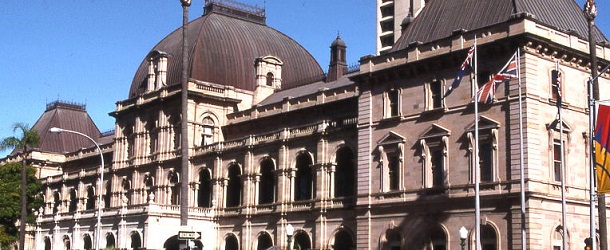
Welcome to the Tally Room’s guide to the 2012 Queensland state election. This guide includes comprehensive coverage of each seat’s history, geography, political situation and results of the 2009 election, as well as maps and tables showing those results.
Seat profiles
Seat profiles have been produced for all 89 Legislative Assembly electorates. You can use the following pages to find your way to each seat’s profile.
Political history
Queensland politics for the last century can be divided into three decades-long eras.
The ALP dominated Queensland politics from 1915 to 1957, barring a single term of conservative rule from 1929 to 1932. The ALP’s domination of Queensland politics collapsed in 1957 when Premier Vince Gair was expelled from the ALP after ongoing conflict with unions, and he took half of Labor’s MPs out of the party to form the Queensland Labor Party.
Following 1957, Queensland was governed by the Country Party/National Party for the next 32 years, with the government led for most of that period by one of two men: Frank Nicklin (1957-1968) and Joh Bjelke-Petersen (1968-1987).
While this government was in coalition with the Liberal Party for most of this period, the Country Party took steps to ensure it dominated government through manipulation of the electoral system in ways that disadvantaged the Liberal Party, and a break with the Liberal Party in 1983 saw the Liberals lose over two thirds of their seats and left the Liberal Party in opposition to a National majority government.
By the end of this period, Queensland’s government was known for widespread corruption and an authoritarian state government, and in the late 1980s this regime began to lose its grip.
In 1989, Wayne Goss led the ALP back to power, and the ALP has governed for all but two years over the last two decades. Goss governed until 1996, and after two years of National-Liberal rule, Labor has governed continuously under Peter Beattie and Anna Bligh for the last fourteen years.
Recent events
Peter Beattie stepped down in 2007, after nine years as Premier. His successor, Anna Bligh, largely did a good job of taking control of the state, and she won a relatively comfortable victory in 2009.
The LNP has dominated polling for the last 18 months, except for a period in early 2011 when Bligh benefited from her management of a number of natural disasters.
The LNP’s game-changing move took place in March 2011, when John-Paul Langbroek was replaced as leader by Campbell Newman, Lord Mayor of Brisbane (and not a state MP). Since then the LNP have been on track for a comfortable victory.
Key seats
The Liberal National Party needs to gain 14 seats on top of its 31 to win a majority in the Parliament. Current polling suggests they will win this easily. There are a number of key seats that will shape the result at the upcoming election.

